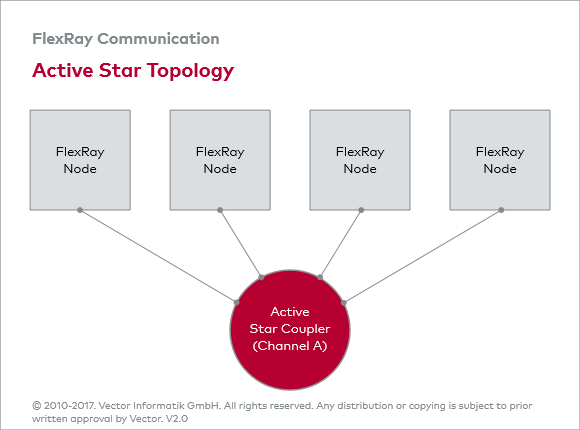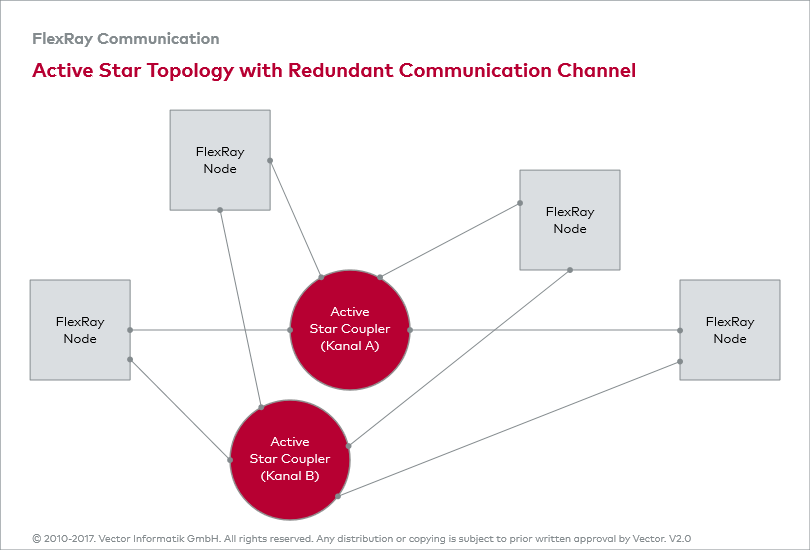Active Topologies
As an alternative to passive connection, the FlexRay nodes may also be interconnected with the help of an active star coupler: the FlexRay nodes to be interconnected are physically arranged into a FlexRay cluster in the form of a star, and the passive center star (passive star) is replaced by an active star coupler.
An active star coupler accepts signals via a communication branch, amplifies them and distributes them to all other communication branches. Except in the case of mixed topologies, there is one FlexRay node at the end of each branch. The maximum distance between the active star coupler and any FlexRay node may not exceed 24 meters.
The advantage of the active star topology is that it avoids propagation of errors by disconnecting faulty communication branches from the active star coupler. Also advantageous is the ability to implement FlexRay clusters with larger extensions and more stable electrical conditions due to ideal bus terminations.
The figure “Active Star Topology” shows an active star topology with one communication channel. The figure “Active Star Topology with Redundant Bus”, on the other hand, shows an active star topology with a redundant communication channel.
During the design process for an active cluster topology, it must be considered that the active star coupler delays signal transmission. Due to what is referred to as star truncation, the transmission of each FlexRay message must begin with a Transmission Start Sequence (TSS). Star truncation is the time that an active star coupler needs to reach its operating state. By FlexRay specification this must not exceed 450 nanoseconds.
The length of a FlexRay cluster may be extended by 24 meters to a maximum of 72 meters by connecting two active star couplers in series. To assure signal integrity, however, this maximum attainable network length is reduced considerably, so a maximum network length of 3x12m should be assumed in practice.



